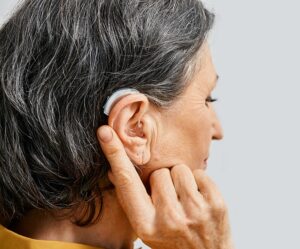 They’re finally here: over-the-counter hearing aids can now be purchased at pharmacies, big box stores, or online without a prescription. This can change the game for healthy aging.
They’re finally here: over-the-counter hearing aids can now be purchased at pharmacies, big box stores, or online without a prescription. This can change the game for healthy aging.
Without the cost of visiting an audiologist or getting a prescription, hearing aids will become far more accessible to millions of Americans who suffer mild or moderate hearing loss that impacts their daily life.
Advertisement
So, how do you know if you should get one and what you should look for? Here are some tips to help you figure it out.
Do look into OTC hearing aids if you have mild to moderate hearing loss. Some signs include:
- Noticing speech or other sounds regularly seem muffled
- Having trouble hearing over background noise
- Struggling to understand speech during a phone call, from the television, or when you can’t see who is talking.
- Regularly asking others to repeat themselves, speak more slowly or clearly, or talk louder.
- Getting regular complaints from family or friends that you’ve turned the sound up too loud or aren’t hearing them properly.
Don’t get an OTC hearing aid if your problems are more severe than that, like requiring someone to speak to you loudly even if you are in a quiet environment. Problems like that mean you’re likely out of the range intended for OTC devices.
Do see your family doctor before purchase if you’re experiencing some red flags. These are things like:
- Fluid, blood, or pus coming out of the affected ear
- Sudden or fluctuating hearing loss
- Better hearing in one ear than the other
- Ringing or buzzing in both ears
- Vertigo or dizziness
- A full or plugged feeling in the ear
Don’t be scared to talk to your doctor if you aren’t sure how to gauge your hearing loss.
Do pay attention to the hearing aid’s return policy and if it has good customer service.
Advertisement
Don’t be impatient. It can take some time to adjust to a hearing aid and find the one that best fits you.
Do have a smartphone. Many of these devices use smartphone apps to make adjustments.
Do some research for reputable companies and know the price ranges. Avoid offers that look too good to be true. Prices of these devices range from $199 to about $1,000.
